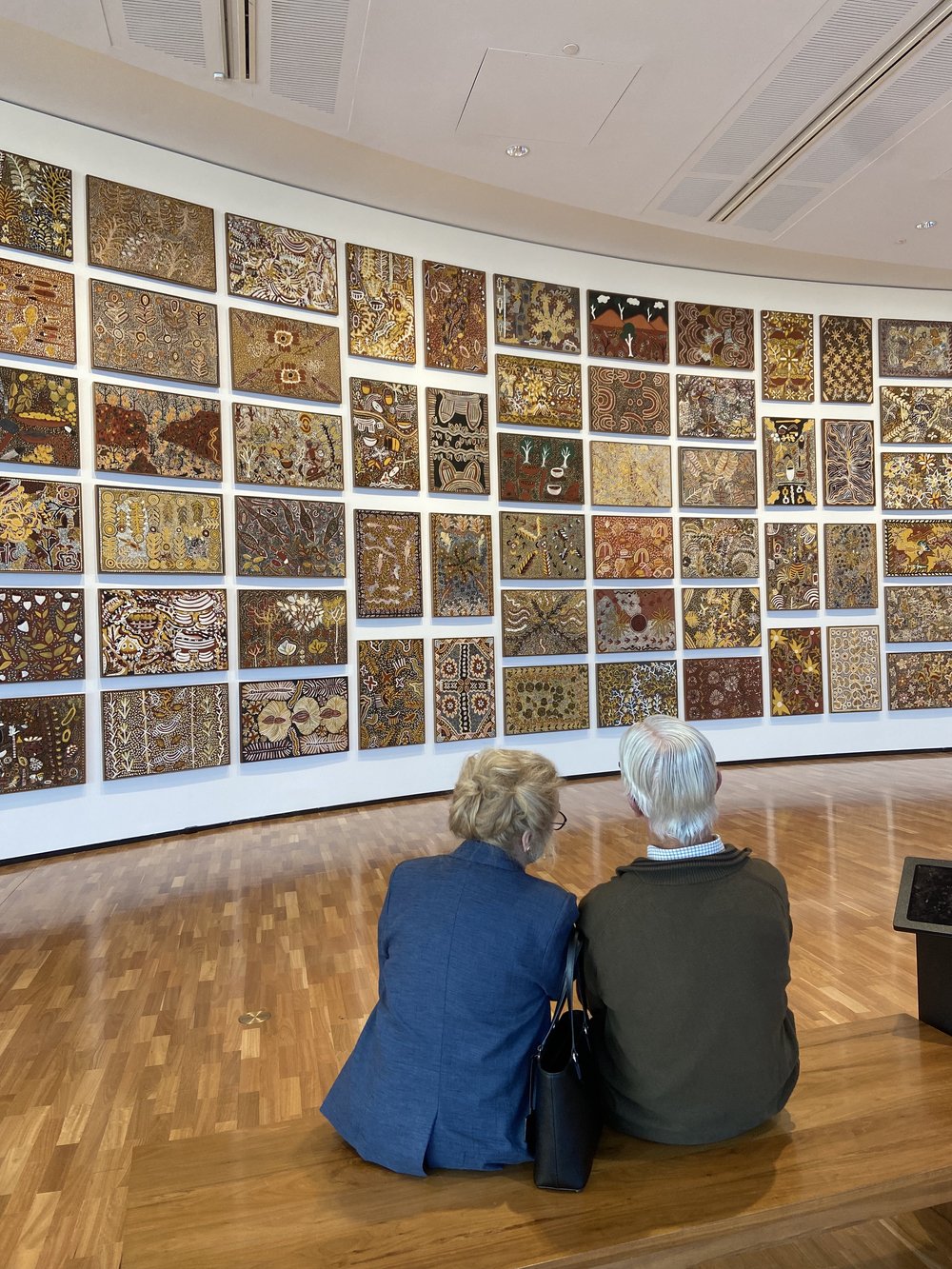

n n n n nn nn nn nn n n n 









Justine Segui, a French Young Friends of the Musée Granet (Aix-en-Provence) and student in English and Cultural Studies, relates her experience as an exchange student in Australia, writing a master thesis on museums, travelling exhibitions and Aboriginal art.
They say Australia is a country of ‘mateship’. Well, let me say that in my own experience, I could not agree more. It all started with a fortunate encounter. In June 2023, I travelled to Paris with other Young Friends of the Musée Granet to attend the French Federation of Friends of Museums (FFSAM) General Assembly and celebrate its 50th anniversary. This is where I met Carolyn Forster, president of the WFFM, a remarkable and kind-hearted woman.
When I heard Carolyn worked with the “National Museum of Australia” it seemed like the universe was sending me a message. Indeed, my thesis focuses on the travelling exhibition Songlines: Tracking the Seven Sisters from the NMA and analyses how it was adapted to the French public by the Musée du quai Branly – Jacques Chirac who hosted the exhibition last year. Songlines is an exceptional exhibition on Aboriginal culture and its systems of knowledge which was co-curated by Aboriginal communities.
From a brief meeting in Paris last June, I ended up at Carolyn’s place in Canberra, sitting at the kitchen table with her husband, sharing and hearing stories of another time and other places. Meeting Carolyn resulted in a series of lucky events: I found a place to live in Sydney – becoming her grandson’s housemate – and, most importantly, I was introduced to museum professionals and crucial members of the Songlines exhibition team who shared with me their experiences. Among them, Deborah Hill, travelling exhibition coordinator, and Louise Palmer, collection care staff, explained how they both helped the different venues to install and deinstall (sometimes remotely) the exhibition. Sita McAlpine, coordinating curator and now First Nations outreach, discussed the relations between the museum and the ‘curatorium’, the Aboriginal communities, artists, elders and custodians, who created Songlines. Finally, Margo Neale, lead curator, told me about the genesis and the intentions of the exhibition. I was amazed at how friendly, supportive and generous they all were. Meeting these persons and having a glimpse at the behind the scenes was truly inspiring on a professional and personal level. It is also interesting to notice the cultural differences in the professional world. While France tends to be very formal and hierarchical, Australia is more casual and approachable.
Museums in Australia are mostly free. For its Triennial, the National Gallery of Victoria (Melbourne) held fascinating artworks and artistic projects like Yoko Ono’s My Mummy is Beautiful, a participative project which invites visitors to write a short letter to their mother and display it on the walls of the gallery, or Richard Lewer’s Confessions which turned visitors’ shameful truths into social art. Others, like Agnieszka Pilat’s Heterobota, questioned our use of advanced technology by creating four-legged robots which disturbingly copy human activities like playing, resting or drawing. Becoming a member of the Art Gallery of New South Wales (Sydney), I attended guided tours of the 24th Biennale of Sydney titled Ten Thousand Suns. In Canberra, I visited the National Gallery of Australia and its exhibition on Emily Kame Kngwarreye, perhaps the most famous Aboriginal artist in Australia, and the National Museum of Australia for its fabulous permanent exhibition on First Australians.
As much as museums introduce you virtually to new people and ideas, it can sometimes lead to real life encounters. Walking out of the Art Gallery NSW, I met Leslie McLeod, an Aboriginal man performing Welcome to Country and other ceremonies who spend the afternoon telling me the most incredible stories. Leaving for an adventure driving around Sydney in his 1992 vintage car, he showed me the variety of gum trees and leaves he uses for the smocking ceremonies he organises and explained the significance of some places in Sydney for Aboriginal history and culture.
The teenager I was who once dreamed to explore Australia would have never believed how far I’ve come to experience what this beautiful country has to offer.
